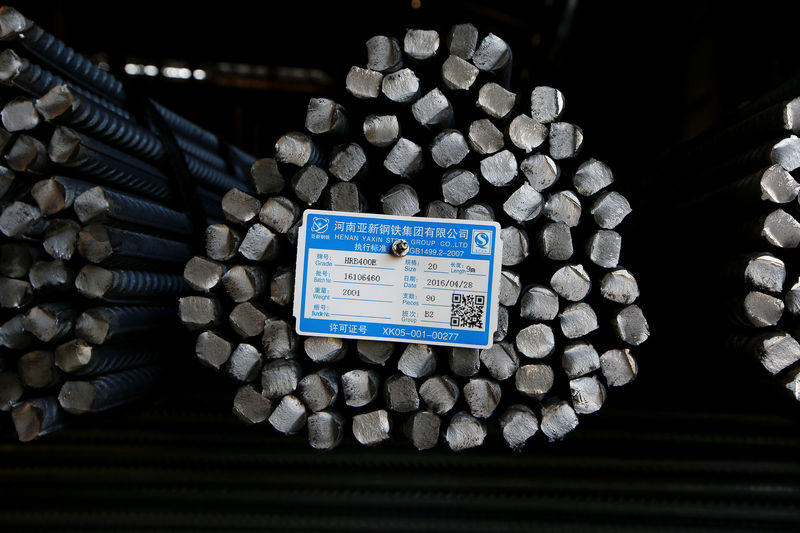(Repeats item issued earlier. The opinions expressed here are those of the author, a columnist for Reuters)
By Clyde Russell
LAUNCESTON, Australia, Nov 28 (Reuters) - Almost unnoticed, Rio Tinto (LON:RIO) Chief Executive Jean Sebastien Jacques has ushered the China iron ore elephant out of the room.
News that Rio RIO.AX has quietly abandoned its long-held view that China's steel output will rise to 1 billion tonnes a year by 2030 wasn't exactly hidden by Jacques, but neither was it highlighted when the new boss of the world's second-largest mining company held an investor briefing last week.
What gathered much more attention on the negative side was the scandal over $10.5 million in payments to an adviser on the ill-fated Simandou iron ore project in Guinea, which has claimed the jobs of two senior executives. the plus side of the ledger was Jacques' commitment to boost free cash flow by $5 billion over the next five years, and the stronger outlook for the short-term given the strong recent price performance of iron ore and coal.
But there can be little doubt that the major news from Rio last week was the long overdue backing away from the view that China's steel production was heading significantly higher over the medium to long term.
Former Rio CEO Sam Walsh, who was replaced by Jacques in July, had refused to back away from the 1 billion tonne a year forecast, even in the face of mounting evidence that it was becoming extremely unlikely.
It was this optimistic forecast, which had largely been shared by the other major iron ore miners, Brazil's Vale VALE5.SA and BHP Billiton (LON:BLT) BHP.AX , that had been used as justification for the billions of dollars sunk into expanding iron ore capacity.
But China's steel output peaked in 2014 at around 823 million tonnes, before falling to just over 800 million tonnes last year.
A further decline had been forecast for 2016, but output in the first 10 months of the year actually rose 0.7 percent to 673 million tonnes, putting it on track for a full year of about 807 million tonnes.
This year's production has been boosted by rising spending on infrastructure and housing, while exports have managed to hold onto their gains in the first 10 months of the year, rising 0.5 percent from the same period in 2015.
What seems to be happening is that China's steel output has likely reached its peak and will, at best, hold around the 800 million tonne a year level, assuming both infrastructure, housing and exports all hold up.
RIO'S NEW FLEXIBILITY
This is a long way short of the 1 billion tonnes a year that Rio had resolutely clung to, and furthermore defended.
But it seems new CEO Jacques isn't as dogmatic in his views as his predecessors were, while at the same time being tactful in how he phrased the change in Rio's outlook.
Jacques said that uncertainty over the restructuring of China's huge state-owned enterprises (SOEs) made it difficult to predict how things would pan out.
"No one can work with only one scenario ... we work with multiple scenarios and our central case is not 1 billion tonnes," Jacques told analysts at the briefing in Sydney last week.
And Jacques didn't stop there. He went further to say that Rio would consider cutting the amount of iron ore it mines if doing so would boost free cash flow.
"If it means reducing volume, we'll do it," he said.
This sounds almost like heresy compared to what his predecessor said, with Rio, and the other major miners, having previously vigorously defended their decision to expand capacity even as the price of iron ore fell for five years in a row from 2011 to 2015.
Prices have risen strongly this year, with My Steel data showing iron ore delivered to China MYSTL-RIIOI-IMP gaining 56 percent from the end of last year to Friday's close of $71.20 a tonne.
The stronger steel output on the back of higher demand and rising prices has boosted Chinese iron ore imports, which rose 8.9 percent in the first 10 months of the year to 843.3 million tonnes.
This puts China's iron ore imports on track for around 1 billion tonnes in 2016, which would be a record high, but also may prove to be the high-water mark as well.
China, which produces about half the world's steel, is cutting steel capacity, with 88 million tonnes removed this year, above the target of 45 million tonnes. lower capacity is yet to show up in a drop in output, if China does reach the target of cutting as much as 150 million tonnes of capacity by 2020, no doubt steel production will moderate as well.
If China's steel output does settle around 750 to 800 million tonnes a year, this will require as much as 1.2 billion tonnes of iron ore annually, based on the benchmark grade of ore with 62 percent iron content.
What will determine the future success of the major iron ore miners is how much of that 1.2 billion tonnes will be mined domestically and how much will be imported.
That is where the uncertainty lies and Jacques was spot on in identifying this.
The problem for him and the other miners is that in order to keep Chinese domestic iron ore out of the market, the price of imports has to be cheaper.
The alternative for the miners is to produce and export less to China, but cede market share back to China's domestic producers.
Working out which strategy will deliver the best returns is going to be tricky, but at least Jacques has signalled flexibility, something his predecessors distinctly lacked.
Disclosure: At the time of publication Clyde Russell owned shares in Rio Tinto and BHP Billiton as an investor in a fund.
(Editing by Richard Pullin)
